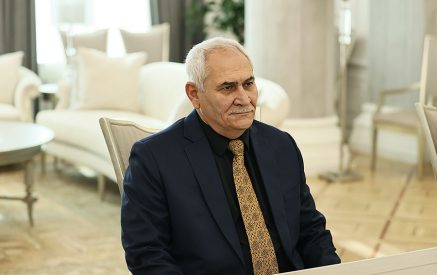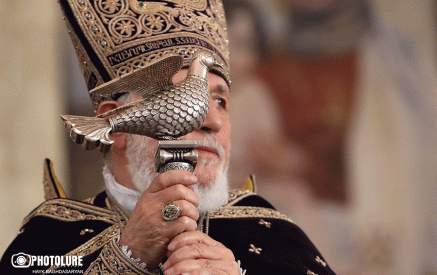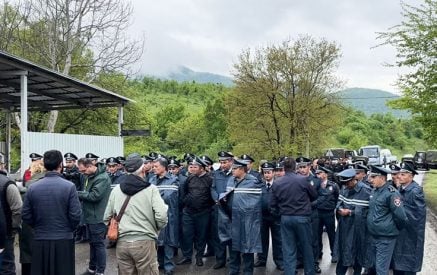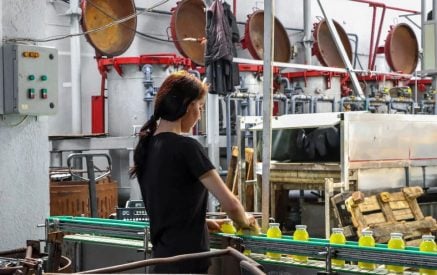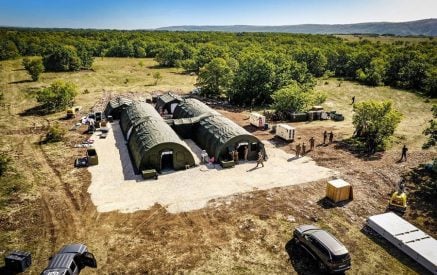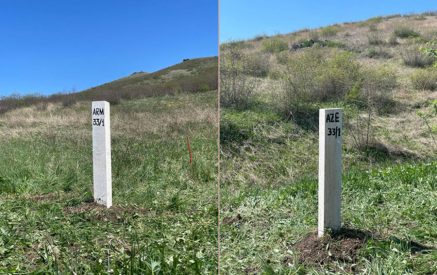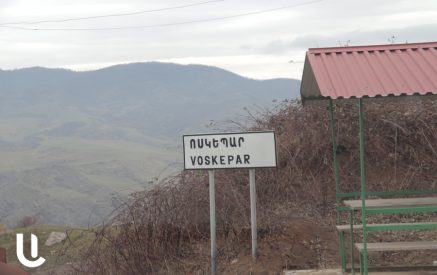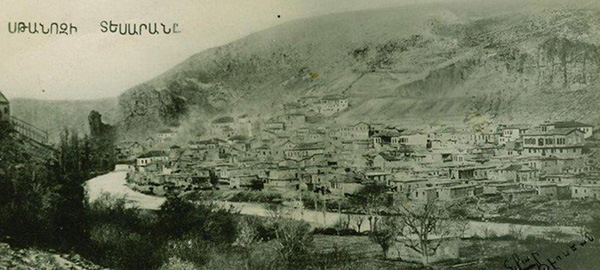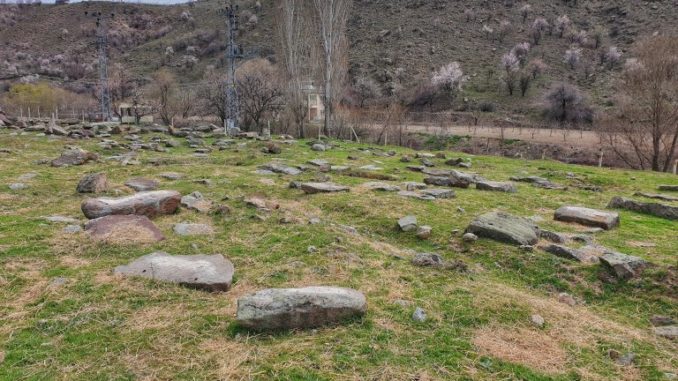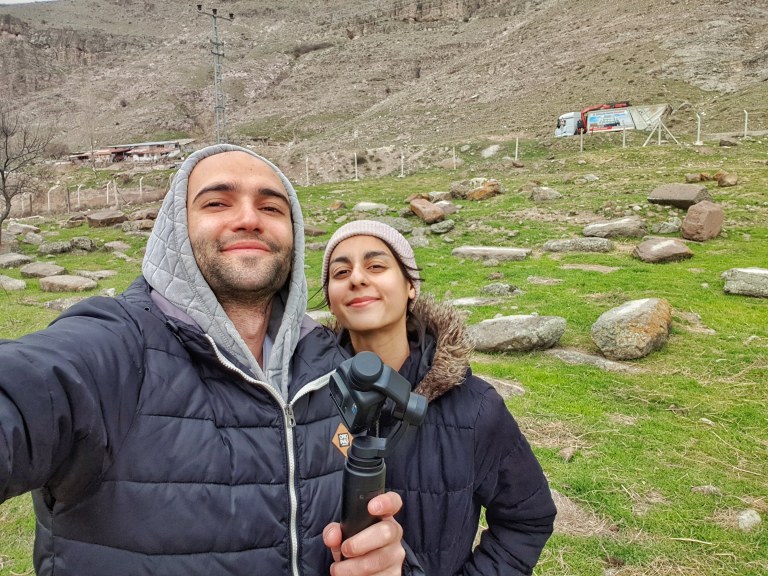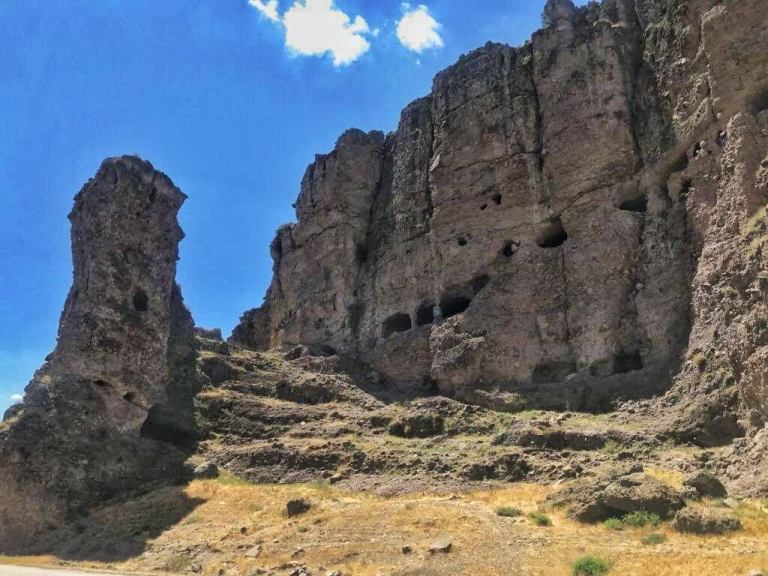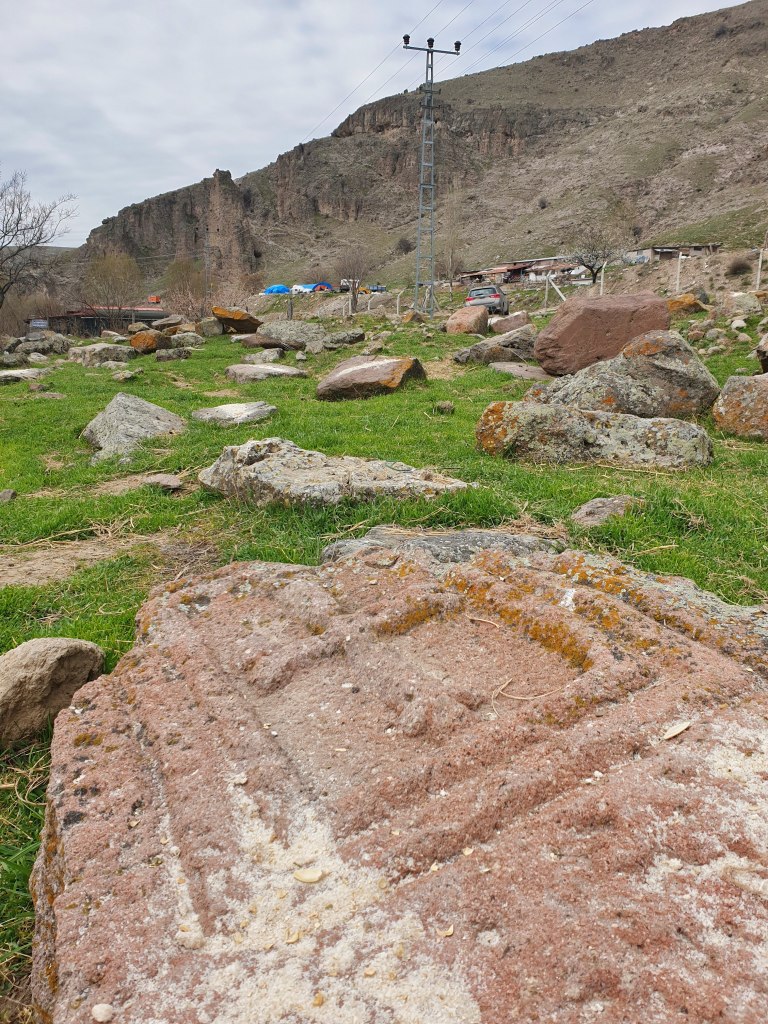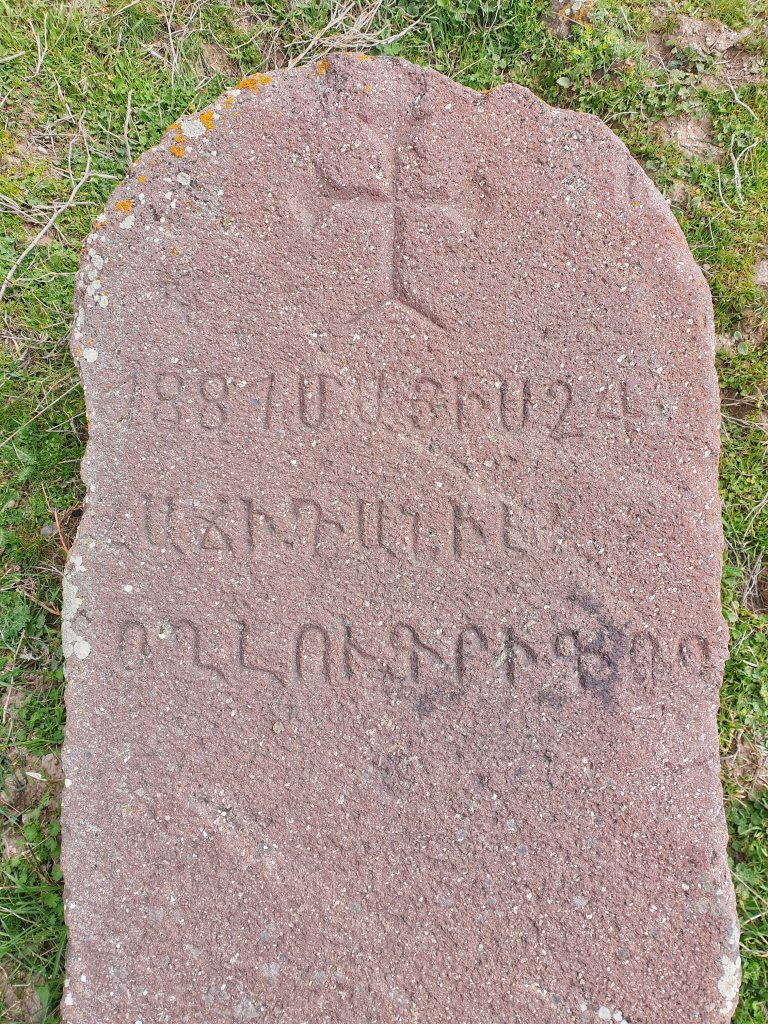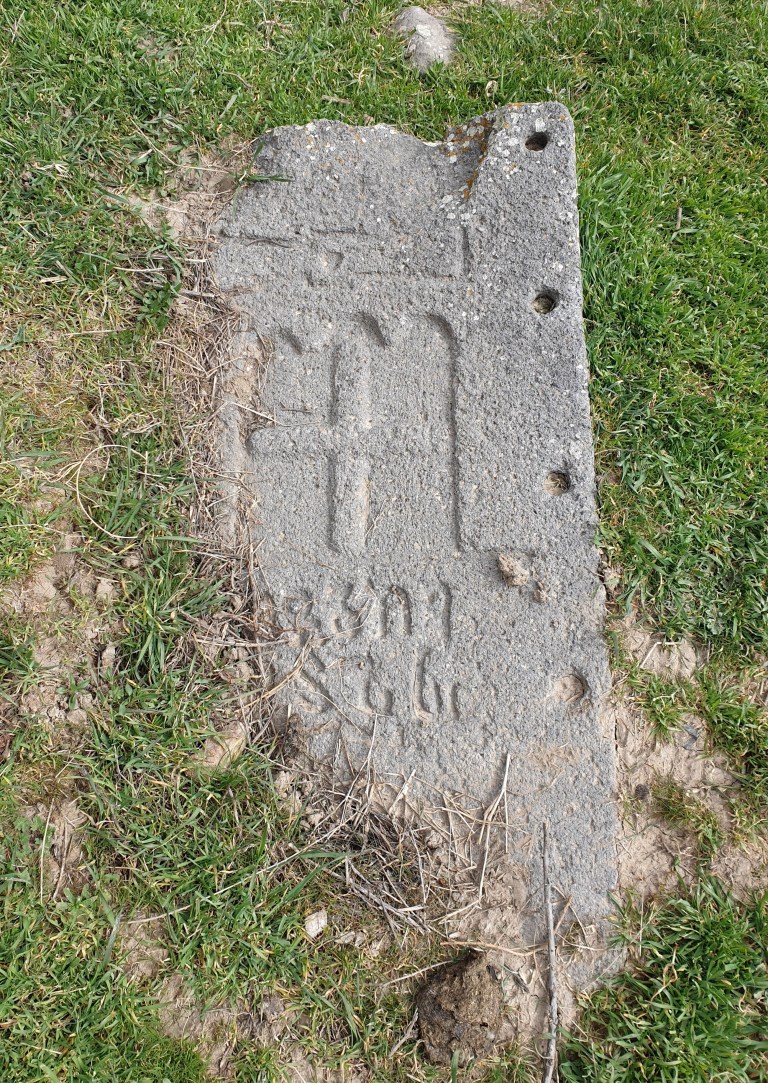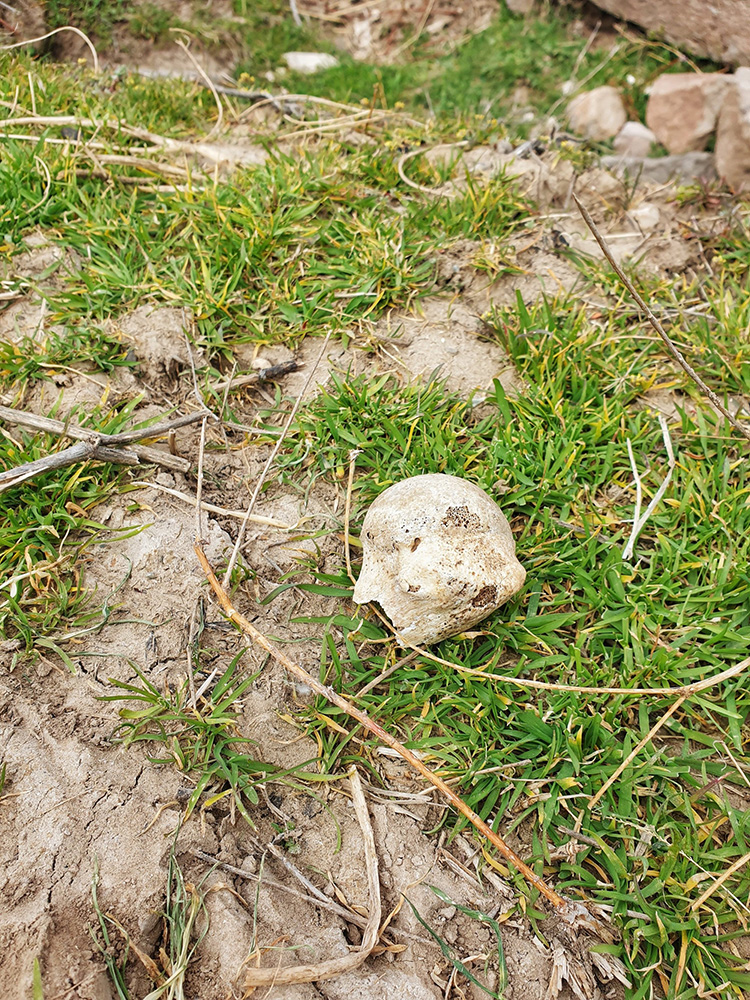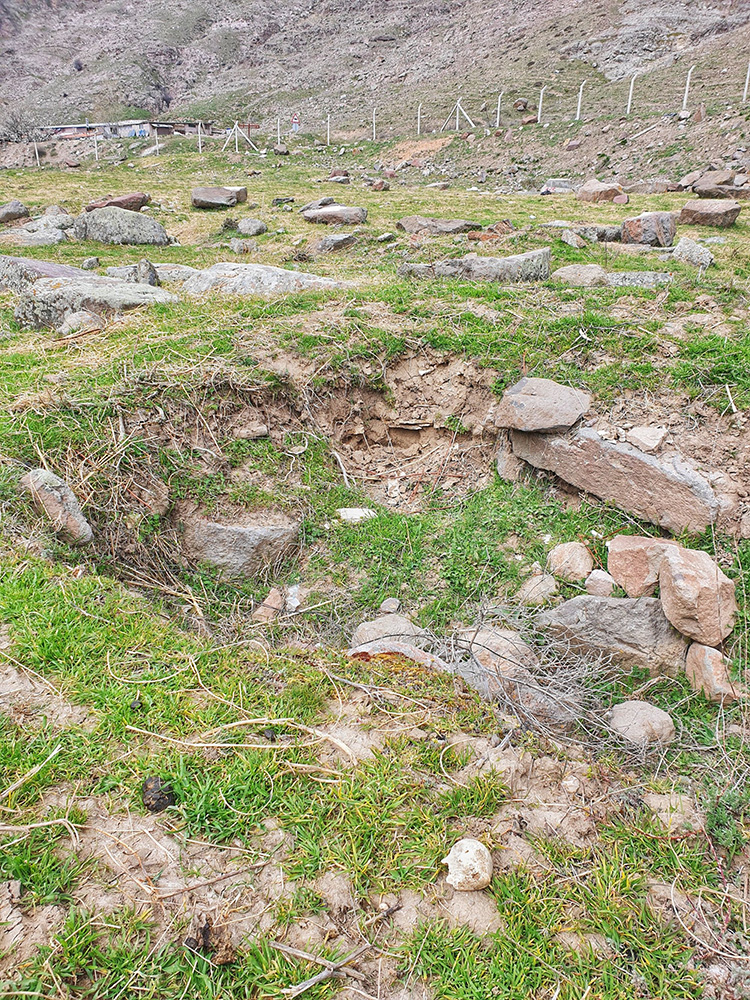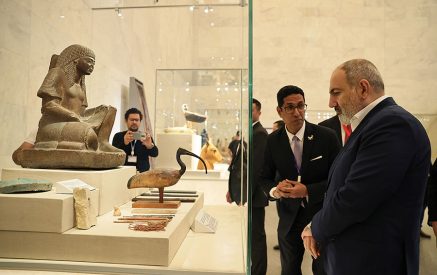STANOZ – ONCE A PROSPEROUS ARMENIAN VILLAGE IN THE OTTOMAN ERA, NOW, NOTHING BUT RUINS AND TOMBSTONES. THIS MARVELOUS CULTURAL HERITAGE IS LOCATED IN THE SUBURBS OF ANKARA AND IT VANISHES DAY BY DAY.
Brief History of Stanoz
Old Armenian manuscripts reveal that the first inhabitants of the village of Stanoz came from Cilicia in the 15th century. As records show, the population of Stanoz before World War I was 3142 people (668 families) and consisted of Armenians only. Up until its abandonment, Stanoz remained an Armenian-speaking settlement.
Residents of this village were known for their special artisanship in carpet making, embroidery and leather processing. Moreover, they produced fabric from Ankara Goat hair, which was a highly demanded product in Europe. In addition, they were also adept at agriculture, cattle-herding and construction.
Unfortunately, today we cannot consider Stanoz a well-preserved heritage site. Due to many factors, a graveyard, a stone bridge and ruins of an Armenian Church are the only things that are left of this historically important village.
Exploring The Village
Since this notable place is a 30-minute drive from where I live, I decided to go there myself to check out the area properly. It was a marvelous experience to explore and wander around the ruins of this settlement which are mentioned in the journals of many travelers across the centuries. On the other hand, the level of neglect and the damage that treasure hunters have done disappointed me quite a lot. It is saddening to say that the damage is irreversible. Whatever is left of Stanoz will soon vanish.
Upon entering the Yenikent (Zir) Valley where Stanoz is located, fascinating fairy chimneys, man made caves and peculiar rock formations start appearing. After that, on the left side of the road you see the old tombstones. The graveyard is actually quite big. However, due to illegal infringement of the graveyard by the neighboring private properties, each day the size of this area is getting smaller.
Dark Caves, Stone Bridge and Graveyard
The stone bridge is on the left side of the graveyard. After crossing the bridge you will see the ruins of the old Armenian church. Don’t have high expectations because they are in such abject condition. However, the graveyard still has some notable remains. Unfortunately, it is too late to recover Stanoz and turn this area into a tourist attraction.
I also went up to explore the caves. Due to the fragility and steepness of the ground, I was not able to check out many caves, neither were the travelers who visited here many years ago. Most of the caves are not accessible anyway and, unfortunately, local youngsters vandalized the caves with graffiti. No one really knows if they go deeper inside the hill or are connected to each other as a vast network. Ainsworth believed that the caves are connected to each other through complicated tunnels. Therefore, the caves still remain a mystery!
Stanoz In Ancient Journals
The earliest information about Stanoz appears in journals written by two prominent travelers – Evliya Çelebi and British explorer, William Francis Ainsworth, who has visited many places in Anatolia. Both of these travelers mention Stanoz as an opulent settlement that stretched across the Çubuk River. According to British military officer, Frederick Burnaby’s travel journals, during his visit to Stanoz, one of the Armenian priests told him that Armenians of Stanoz live in peace with people who practice other religions such as Islam and Judaism. I believe, as a result of peace and harmony, Stanoz ended up being a wealthy settlement.
The well-known Turkish traveler Evliya Çelebi shares remarkable anecdotes in his journal about this village after his visit in 1643. He speaks of Stanoz as a wealthy town with impressive productivity. Furthermore, he shares that Stanoz had a thousand dwellings, a big bazaar, a fully functioning Turkish bath and even a laundromat.
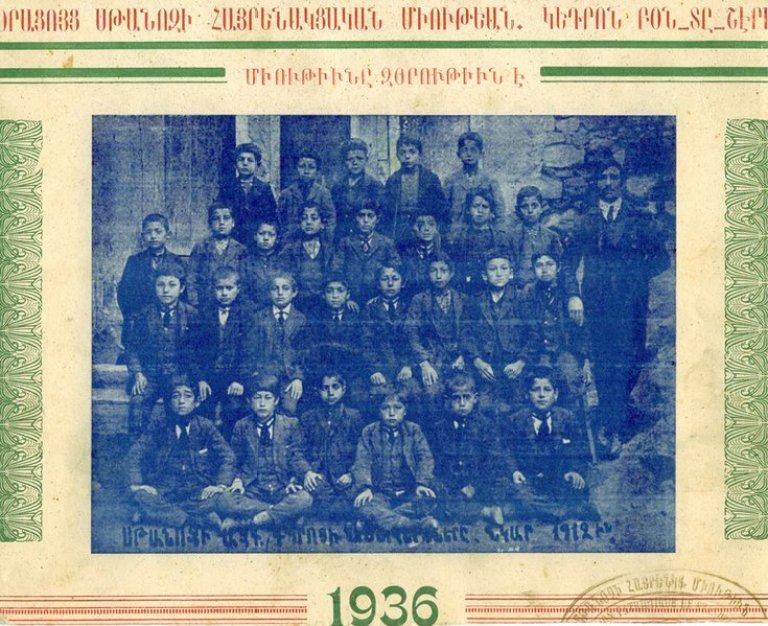
The residents of Stanoz had 3 religious complexes: Surp Pırgiç Church, Karasun Manug Church and a separate Protestant church. 140 male and 40 female students were studying at Surp Ğevontyan School, and 50 male and 35 female students were studying at Lusignan School in Kalecik.
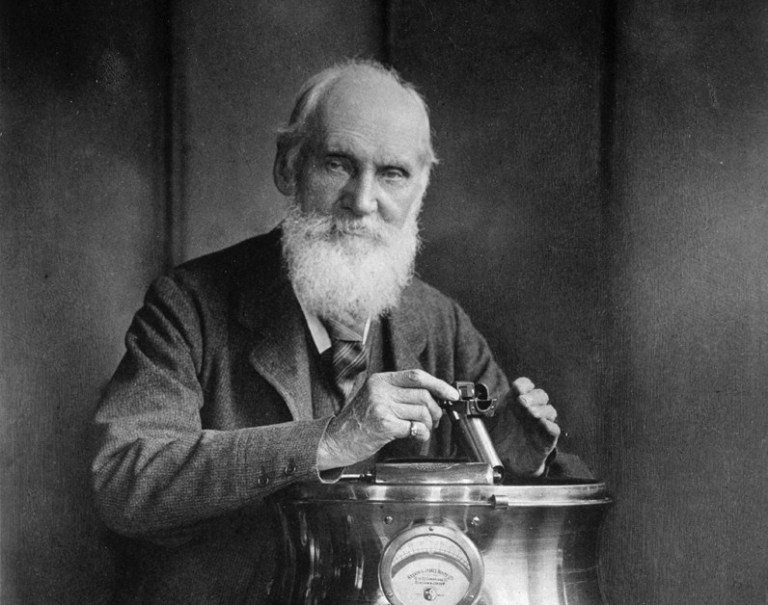
Ainsworth, who visited the region in 1830, reports seeing fairy chimneys and man-made caves. Apart from the geographical features, Ainsworth also concludes that Stanoz is a very prosperous settlement in comparison with the surrounding villages. Moreover, he states that there might be ancient settlements in the valley buried under the soil.
What happened to the Armenians of Stanoz?
Due to the devastating upheaval World War I and Ottoman government policies caused, many Armenians permanently left the village in 1915. War, plunder and bandits destroyed most of the village and a big part of this heritage. Before 1915, this village was one of the most prosperous settlements of Ankara Sanjack (Province of Ankara in Ottoman Turkish). Nonetheless, it became a ghost town in subsequent years and most of its remnants gradually vanished in the dusty pages of history. The biggest portion of what has remained is a pillaged graveyard, apart from that there is a dilapidated stone bridge and ruins of an Armenian Orthodox Church.
Only 3 Armenians are left…
Only 3 Armenians remain from the thousands of residents of Stanoz. According to information I found on behzatmiser.blogspot.com, Kevork Balabian is one of these 3 Armenian inhabitants of the region and was born in Stanoz. He says:
“Stanoz had 1200 households and a population of 7-8 thousand. Ottomans valued Stanoz a lot. At the time, the Armenian population of Stanoz migrated to modern cities such as Istanbul, Marseille and Beirut. Only my wife and I, who came from Hatay, and our daughter live in the region. I go there often as I have a farm and a vineyard. Some treasure hunters come there in hopes of pillaging and finding some valuable artifacts but they are afraid of me so they mostly leave. We have graves there and I still look after them”
Old Turkish locals say..
“We all grew up with Armenians, went to the same schools. Back then if you were hungry, you could easily knock an Armenian’s door and ask for food and it was same for them. We did many things together. There was an Armenian doctor whose name was Mihran Kiremitçi. Every single child who was born in this region owes him so much as he cared for everyone and cured everyone’s child regardless of ethnicity and social class. We never saw him asking for money from anyone. And again, weddings, funerals, everything else, we did together with the Armenians. We even celebrated religious holidays together. They used to paint eggs and we used to sacrifice animals. We miss them.”
As M. Suryan reports in the Aravod newspaper published on April 28th, 1919
“Some of the houses of Armenian residents who were exiled during World War I were looted and robbed. A considerable part of Albanians and Bosnians resettled in these abandoned homes. The new residents demolished many of the structures and provided firewood by removing wooden pillars, floor-ceiling boards of many homes. Moreover, instead of acquiring wood from the forest, they cut the fruit trees in the gardens to warm up. The aftermath was appalling as this notable village became dilapidated ruins. Gradz Kar, a small Armenian village, which consisted of twenty houses, located an hour away from Stanoz, also suffered the same fate.“
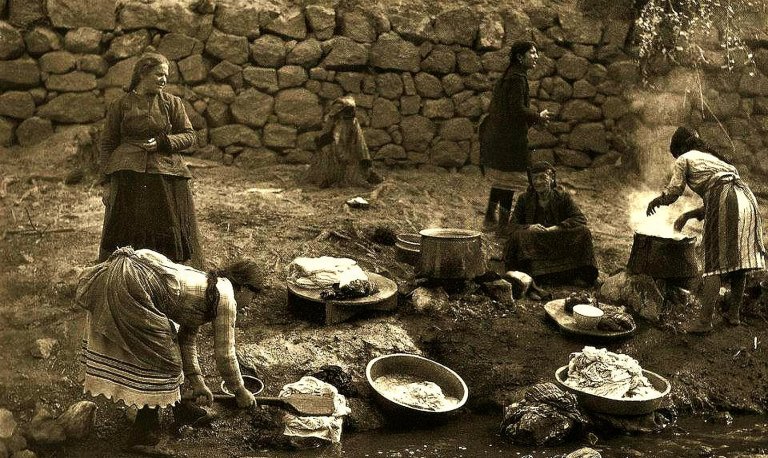
Armenian women washing clothes near Zir River, 1929 Maynerd Owen Williams, National Geographic Archive
What is left of Stanoz today?
Treasure hunters, reckless locals and neglect of the government
A bunch of tombstones with some carvings and Armenian texts on them, but nothing more…
Having been located in a remote valley 30 minutes from downtown Ankara, Stanoz is a popular destination for treasure hunters who destroy what is left of this village each day. The graveyard was once surrounded with barbed wires put by the government, however today almost nothing is left of these and anyone can easily enter this sacred place.
Stanoz is not a popular place among locals and, unfortunately, the government takes poor measures to protect the cultural heritage here. As a result, this historical spot is open to all kinds of threats. Even if there were more notable artifacts that might have illuminated the history of Stanoz, due to illegal excavations they are probably long gone.
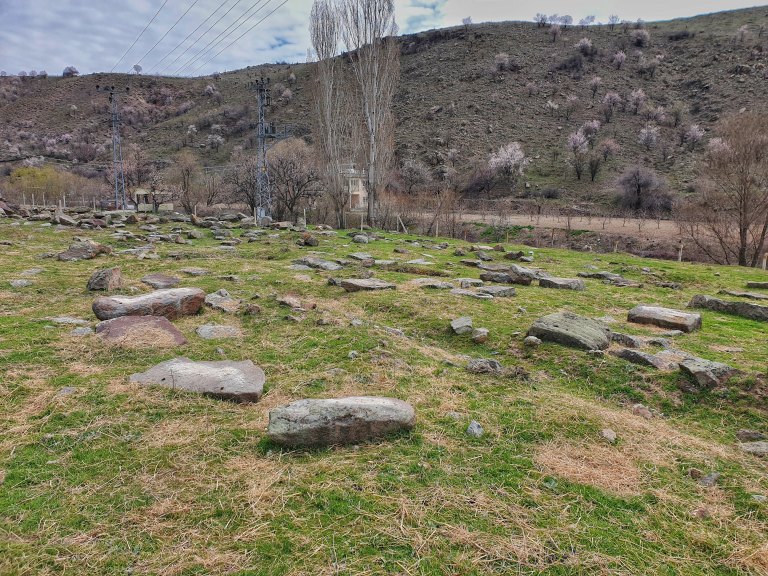
The graveyard is particularly in such an abject condition that human bones are scattered around the graves that are pillaged by the treasure hunters and many of the tombstones are damaged.
The graveyard is particularly in such an abject condition that human bones are scattered around the graves that are pillaged by the treasure hunters and many of the tombstones are damaged.
The tombstones are priceless. Each of them represent historical importance, however, their current state is heartbreaking. Even now after devastating centuries, there are still many artifacts and historical objects laying around.
Human Bones Are Scattered Around
For me the most appalling thing was to see some human bones scattered around the graves. In hopes of finding gold or other valuable goods, treasure hunters dig the graves illegally and throw around the bones of the Armenians who are resting there eternally. Undeniably, this is an extreme case of disrespect.
We Turks lived with Armenians in peace for centuries and I believe this place should carry the same importance as other Turkish cemeteries. Regardless of ethnicity and religion, the Turkish state should have taken measures to protect the memory of this village. Unfortunately, the future of Stanoz seems bleak.
Conclusion
In conclusion, Stanoz is an interesting spot to visit for history enthusiasts or whoever is into exploring different places. It is quite different than all of the historical heritage sites in Ankara. If you don’t have a car, it is almost impossible to get there because of the lack of public transportation. So, it would be more convenient to go there by car.
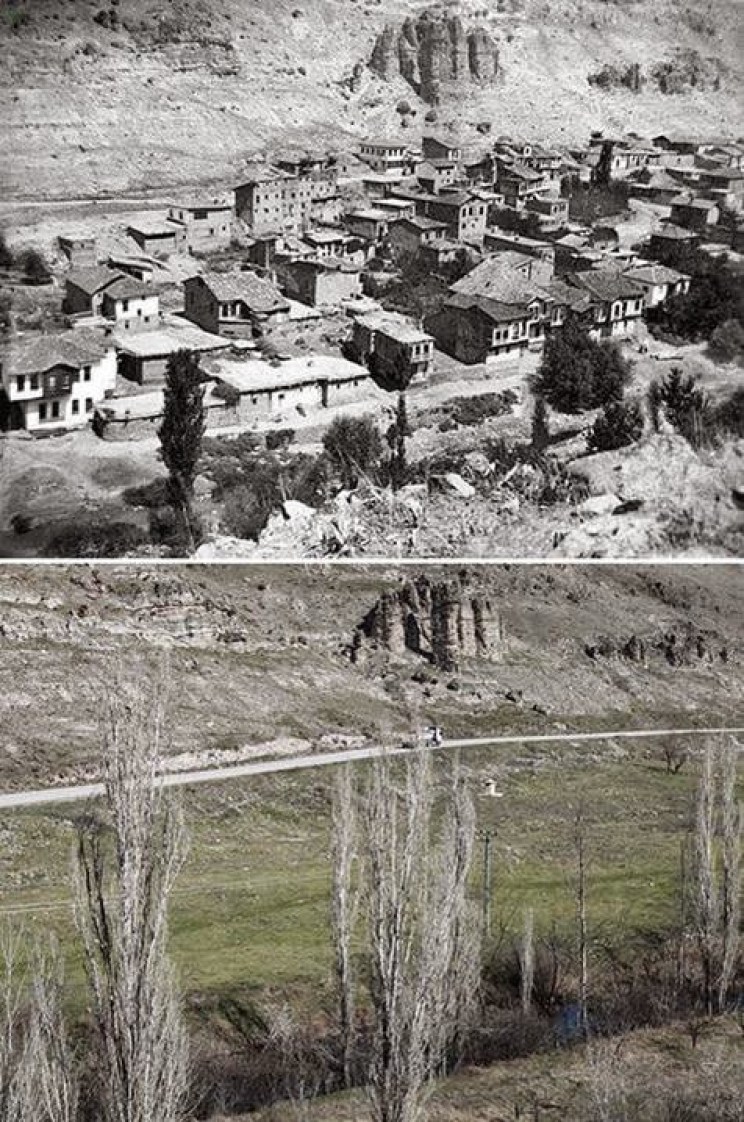
It is quite sad to see that this old and notable settlement completely vanished. This picture is solid proof of that. After 5 months of my first visit, I decided to go there again and I was shocked to see that many of the tombstones are missing. The Armenians of Stanoz were our kin. Who knows what stories and secrets this settlement has to tell us. Unfortunately we will never learn them.
Where is Stanoz located?
Stanoz, is located in Yenikent-Zir Valley which is a part of Sincan municipality.
Coordinates of the graveyard and the ruins of the Armenian village: 39.973385, 32.507227
Click the pic to to see the map of the region!
Main photo. Stanoz back in the 19th century




